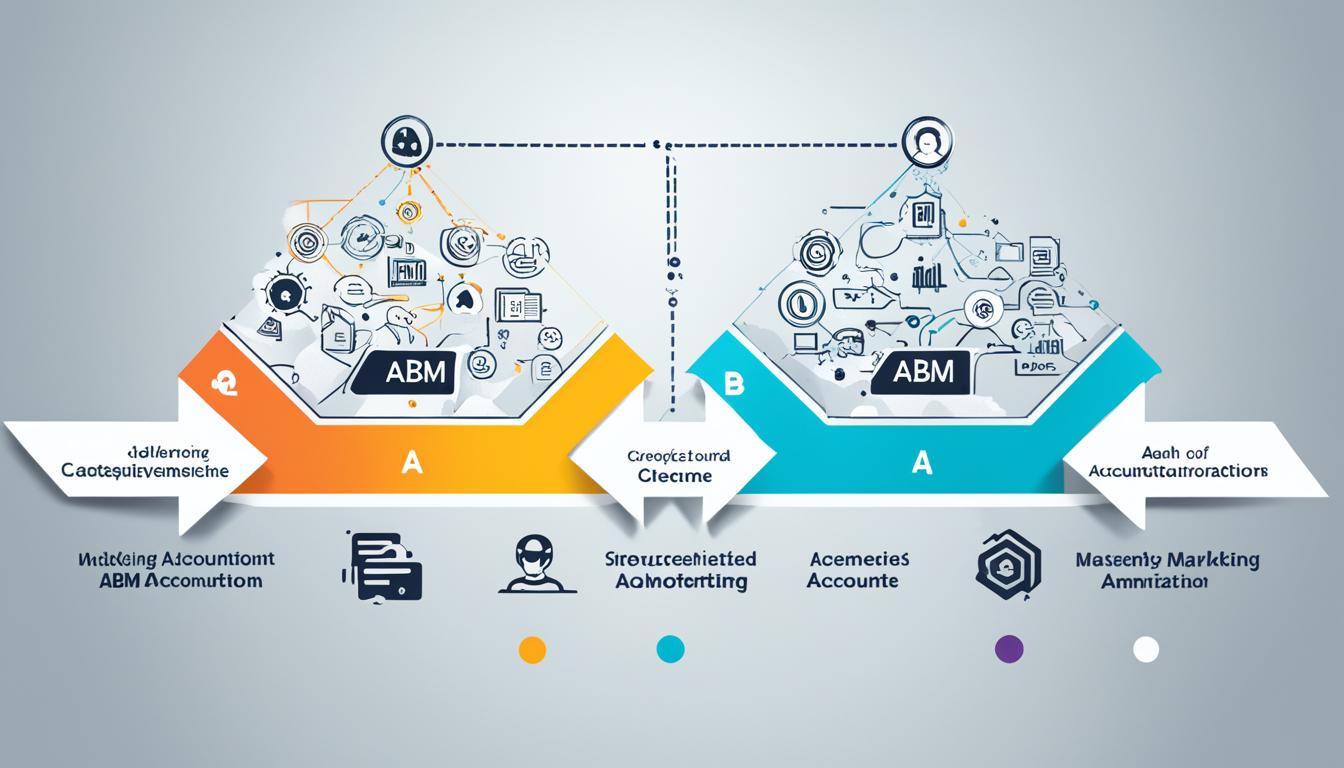Kellogg’s Frosted Flakes is a beloved cereal brand known for its iconic mascot, Tony the Tiger, and its deliciously sweet flakes. But behind the bowl of cereal lies a comprehensive marketing strategy that has helped Kellogg’s maintain its position as a leader in the breakfast cereal industry.
When it comes to promoting Frosted Flakes, Kellogg’s utilizes a combination of traditional and digital marketing tactics. From engaging television commercials featuring Tony the Tiger to targeted social media campaigns, the brand’s marketing efforts aim to capture the attention of both children and their parents.
A key aspect of Kellogg’s marketing strategy is consumer engagement. The brand actively seeks to connect with its audience through interactive online content, contests, and promotions. By fostering a sense of community and encouraging consumer participation, Kellogg’s creates a strong bond between Frosted Flakes and its loyal customers.
Product positioning is another crucial element of Kellogg’s marketing strategy. With competitors vying for a share of the breakfast cereal market, Kellogg’s focuses on highlighting the unique attributes of Frosted Flakes, such as its taste, nutritional value, and iconic brand identity. By differentiating itself from the competition, Kellogg’s ensures that Frosted Flakes stands out on the shelves.
Case studies have shown the effectiveness of Kellogg’s marketing strategies for Frosted Flakes. Through careful planning, market research, and a deep understanding of consumer behavior, Kellogg’s has successfully positioned Frosted Flakes as a breakfast cereal of choice for both children and their parents.
Now, let’s delve deeper into the specifics of Kellogg’s marketing strategy for Frosted Flakes and explore the key factors behind its success.
Key Takeaways:
- Kellogg’s Frosted Flakes employs a comprehensive marketing strategy to promote the cereal brand.
- The brand utilizes a mix of traditional and digital marketing tactics to reach its target audience.
- Consumer engagement is a priority for Kellogg’s, fostering a sense of community and creating a strong bond with customers.
- Product positioning techniques highlight Frosted Flakes’ unique attributes and differentiate it from competitors.
- Case studies demonstrate the effectiveness of Kellogg’s marketing strategies for Frosted Flakes.
Kellogg’s Marketing Strategy: Strategic Planning and Decision-making Process
In order to position itself as a leader in the breakfast cereal market, Kellogg’s relies on a well-defined marketing strategy. At the core of this strategy is strategic planning, which involves thorough research, data analysis, and market insights. By evaluating opportunities and challenges, Kellogg’s develops comprehensive marketing strategies that align with their business objectives and drive success.
Market trends, consumer preferences, competition, and technological advancements play a crucial role in shaping Kellogg’s decision-making process. The company keeps a close eye on evolving market dynamics to identify emerging opportunities and adjust its strategies accordingly. By staying ahead of the curve, Kellogg’s can effectively connect with its target audience and deliver products that meet their needs.
Real-life case studies provide valuable insights into Kellogg’s marketing strategic planning and principles. These studies highlight the effectiveness of their decision-making process and the impact it has on the success of their marketing campaigns. Through careful analysis and implementation, Kellogg’s has managed to create a strong brand presence and maintain its position in the competitive breakfast cereal market.
Challenges in the Indian Market: Marketing Strategies for Success
Kellogg’s faced several challenges when entering the Indian market, requiring innovative marketing strategies to achieve success. One of the significant hurdles was the lack of awareness regarding breakfast cereals among Indian consumers. Traditional breakfast options were deeply ingrained in the Indian culture, making it difficult for Kellogg’s to carve a space for its products in the market.
Furthermore, Kellogg’s had to compete with established and beloved local breakfast choices, adding to the complexity of their marketing efforts. Adapting to the Indian market meant understanding consumer behavior patterns and catering to the unique cultural aspects of the country.
Pricing also posed a challenge for Kellogg’s. Balancing affordability with positioning the products as high-quality and nutritious was a delicate task. Kellogg’s had to overcome pricing barriers to establish itself as a competitive player in the Indian breakfast cereal market.
To address these challenges, Kellogg’s developed targeted marketing strategies tailored specifically for the Indian market. They conducted extensive research to better understand the needs and preferences of Indian consumers, allowing them to adapt their product offerings and messages accordingly.
In addition, Kellogg’s focused on building brand awareness and educating consumers about the benefits of breakfast cereals. They engaged in advertising campaigns that highlighted the nutritional value of their products, dispelling misconceptions and positioning themselves as a healthier alternative to traditional breakfast options.
Understanding the cultural nuances, Kellogg’s incorporated Indian flavors and customized their products to cater to local tastes. This localization strategy helped Kellogg’s overcome the initial sales decline and gain market share.
Overall, by embracing the challenges of the Indian market and tailoring their marketing strategies accordingly, Kellogg’s successfully established a strong presence in the Indian breakfast cereal market. Their efforts to understand consumer behavior, adapt to cultural aspects, and adjust pricing contributed to their success in overcoming initial setbacks and positioning their brand for long-term success.
Mistakes and Lessons Learned: Kellogg’s Journey in India
Kellogg’s faced a series of challenges during its initial foray into the Indian market. The company made several mistakes that hindered its success, but these missteps also provided valuable lessons for future endeavors. By identifying and addressing these marketing challenges, Kellogg’s was able to rectify its errors and pave the way for continued growth in India.
Overlooking Cultural Aspects
One of the significant mistakes Kellogg’s made was overlooking the cultural aspects of the Indian market. The company failed to fully understand the deeply ingrained food culture and traditional breakfast preferences in India. As a result, Kellogg’s initial marketing efforts did not resonate with Indian consumers, leading to a disconnection between the brand and the target market.
Misinterpreting Consumer Behavior
Kellogg’s also misinterpreted consumer behavior in India, further exacerbating its marketing challenges. The company assumed that the same strategies that worked in other markets would yield similar results in India. However, cultural differences and varying consumer preferences required a customized approach. Kellogg’s failure to adapt to the specific needs and desires of Indian consumers hindered its efforts to establish a strong brand presence.
Premium Pricing Policy
Additionally, Kellogg’s implemented a premium pricing policy, which posed affordability issues for Indian consumers. Given the price-sensitive nature of the Indian market, this pricing strategy limited the brand’s reach and hindered its ability to compete with more affordable alternatives. Kellogg’s failed to align its pricing strategy with the purchasing power and expectations of Indian consumers, resulting in a lack of brand recall and lower sales.
However, Kellogg’s quickly recognized these mistakes and took proactive measures to rectify them. By understanding the significance of cultural nuances, adapting strategies to consumer behavior, and reevaluating pricing policies, Kellogg’s was able to learn valuable lessons and devise effective marketing strategies for future success in India.
Learning from these experiences, Kellogg’s successfully navigated the complexities of the Indian market. The company’s ability to address and overcome its mistakes demonstrates the importance of adaptability and continuous improvement when expanding into new markets. By embracing the diversity of consumer preferences and tailoring marketing strategies accordingly, Kellogg’s solidified its position in India and continues to thrive in this vibrant market.
Lessons Learned from Kellogg’s Journey in India
| Mistake | Lesson Learned |
|---|---|
| Overlooking cultural aspects | Understanding and embracing cultural nuances are crucial for market success. |
| Misinterpreting consumer behavior | Adapting marketing strategies to align with consumer preferences is essential for resonance and brand connection. |
| Premium pricing policy | Customizing pricing strategies based on market affordability is key to widening consumer reach and competing effectively. |
Reviving Kellogg’s Image: Successful Marketing Strategies in India
To revive its image in India, Kellogg’s implemented successful marketing strategies that took into account the unique dynamics of the Indian market. Recognizing the need for a targeted approach, Kellogg’s shifted its focus to children as the primary audience.
In order to resonate with young consumers, Kellogg’s developed engaging marketing campaigns that appealed to children’s interests and aspirations. By leveraging themes of nutrition, child engagement, and competition, Kellogg’s created a compelling narrative that captured the attention of both children and their parents.
To further cater to the Indian market, Kellogg’s introduced new cereal options with localized flavors. Products such as Chocos and Frosties offered familiar tastes that aligned with the preferences of Indian consumers, enhancing their appeal and market penetration.
Through these strategic marketing initiatives, Kellogg’s successfully revived its image in India and established a stronger presence in the market. By targeting children as the main audience, creating engaging campaigns, and developing localized offerings, Kellogg’s effectively positioned itself as a brand that understood and catered to the needs and preferences of Indian consumers.
| Key Success Factors | Details |
|---|---|
| Targeted Audience | Shifted focus to children as the main audience, aligning with their interests and aspirations. |
| Engaging Marketing Campaigns | Developed campaigns that combined nutrition, child engagement, and competition to create a compelling narrative. |
| Localized Offerings | Introduced new cereal options with flavors tailored to the Indian market, such as Chocos and Frosties. |
Wendy’s Dynamic Pricing Controversy: Clearing the Air
Wendy’s, a prominent fast-food chain, found itself embroiled in a controversy surrounding its dynamic pricing strategy. However, it is essential to understand the distinction between dynamic pricing and surge pricing to dispel any misconceptions.
Dynamic pricing is a pricing strategy that adjusts prices based on market conditions, taking into account factors such as demand, seasonality, competition, and operational costs. This approach allows companies like Wendy’s to optimize pricing and offer competitive prices to customers.
On the other hand, surge pricing specifically refers to temporary price increases due to a sudden surge in demand or limited supply. This is commonly observed in industries like ride-sharing and hospitality, where prices may vary based on demand during peak hours or busy periods.
Despite the clear distinction, Wendy’s failed to effectively communicate its dynamic pricing strategy, leading to a misconception that it was implementing surge pricing. This misunderstanding sparked public outcry and negative perceptions.
To avoid such controversies, it is crucial for companies to transparently communicate their pricing strategies to consumers. Clear and concise messaging can prevent misconceptions and misunderstandings, maintaining customer trust and satisfaction.
Understanding the difference between dynamic pricing and surge pricing is vital for consumers to make well-informed choices. Companies like Wendy’s should take proactive measures to educate their customers about their pricing strategies, ensuring transparency and clarity.
By clarifying the air surrounding Wendy’s dynamic pricing controversy, the perception of the brand can be restored, fostering positive consumer sentiment and trust.
Key Points:
- Dynamic pricing adjusts prices based on market conditions, while surge pricing refers to temporary price increases due to supply and demand.
- Wendy’s faced controversy due to the confusion between dynamic pricing and surge pricing.
- Clear communication is essential to avoid misconceptions and negative consumer perceptions.
- Companies should proactively educate customers about their pricing strategies to build trust and maintain transparency.
Dispel the misconception surrounding Wendy’s dynamic pricing:
| Dynamic Pricing | Surge Pricing |
|---|---|
| Adjusts prices based on market conditions. | Temporary price increases due to supply and demand. |
| Factors in demand, seasonality, competition, and operational costs. | Occurs during peak hours or busy periods. |
| Optimizes pricing for competitive advantage. | Ensures availability during high-demand periods. |
Kellogg’s CEO Statements: A Lesson in Communication
Kellogg’s CEO Statements proved to be a valuable lesson in effective communication. The CEO’s remarks about cereal for dinner caused a significant backlash and raised concerns about the company’s understanding of public perception. The statements were widely viewed as insensitive and exploitative, leading to negative reactions on social media platforms.
These incidents highlight the importance of clear and precise communication by corporate leaders and their teams. The CEO’s comments demonstrate the potential consequences of poorly thought-out statements and their impact on public perception.
In today’s digital age, where information spreads rapidly through various online channels, executives must carefully craft their messaging to avoid misinterpretation. It is essential to consider the potential public response and how statements may be perceived by a wider audience.
Companies like Kellogg’s are now more aware than ever of the need to align their communication efforts with the public’s expectations and sensitivities. Mistakes in communication can lead to lasting damage to a company’s reputation and brand image.
By learning from these mistakes and emphasizing effective communication strategies, companies can avoid similar pitfalls in the future. Clear, accurate, and empathetic communication is key to maintaining positive public perception and building trust with stakeholders.
The Magic Behind Frosted Flakes Marketing: Rhetorical Strategies
Frosted Flakes has mastered the art of marketing through the power of rhetorical strategies, captivating their main audience: children. Their marketing campaigns center around the transformative concept of becoming a “mighty mighty tiger” simply by enjoying a bowl of Frosted Flakes. These campaigns ingeniously establish a connection between consuming the cereal and excelling in competitive endeavors, appealing to children’s aspirations and desire for success.
To engage children further, Frosted Flakes incorporates compelling storytelling, captivating videos, and interactive elements on their website. These elements foster a sense of connection, motivation, and excitement for the brand. By leveraging the rhetorical power of storytelling and visual media, Frosted Flakes creates a lasting impression on young consumers, immersing them in a world where they are empowered to unleash their inner tiger.
One of the most iconic figures associated with Frosted Flakes is their beloved mascot, Tony the Tiger. As a charismatic and friendly character, Tony the Tiger embodies the brand’s messaging and values while effectively appealing to children. His enthusiasm and encouragement encourage kids to embrace their potential and strive for greatness, all while having the signature Frosted Flakes cereal by their side.
The magic of Frosted Flakes marketing lies in the clever use of rhetorical strategies that resonate with children. By presenting Frosted Flakes as the catalyst for achieving greatness and using Tony the Tiger as a relatable and inspiring character, the brand creates a sense of belonging and involvement for its young audience. This powerful child engagement strategy fosters a lasting bond between children and Frosted Flakes, ensuring brand loyalty and continued success.
The Appeal to Children: Organizational Strategies
Frosted Flakes understands the importance of appealing to children in their marketing efforts. Through carefully crafted organizational strategies, the brand creates an engaging and interactive experience for young consumers.
One of the key tactics employed by Frosted Flakes is showcasing real stories from children who have achieved progress and success. The brand features these stories on their website, highlighting the positive impact of consuming their cereal. By sharing these testimonials, Frosted Flakes not only builds trust but also creates a sense of aspiration and motivation among children.
Additionally, Frosted Flakes encourages children to actively participate by sharing jokes and engaging in interactive activities. This fosters a sense of community and involvement, allowing children to feel connected to the brand and its message. By catering to a wide range of interests, Frosted Flakes ensures that every child can find something they enjoy on their website.
Through their organizational strategies, Frosted Flakes creates a positive brand image among children. By emphasizing engagement, storytelling, and community building, Frosted Flakes appeals to children in a meaningful way, fostering a strong connection and loyalty.
The Power of Child Testimonials: Building Trust and Loyalty
Frosted Flakes understands the importance of building trust and loyalty among its target audience. One effective strategy that the brand employs is the use of child testimonials. By sharing stories of children’s successes and attributing them to consuming Frosted Flakes, the brand creates a sense of credibility and reliability. Parents and children are more likely to trust a product that is endorsed by their peers, especially when it comes to something as important as their child’s nutrition.
Child testimonials serve as powerful social proof, showcasing the positive impact that Frosted Flakes has had on real children’s lives. When parents see how the cereal has contributed to their child’s growth, development, and success, it strengthens their confidence in the brand. It establishes a personal connection and resonates with their own aspirations for their children.
Moreover, child testimonials create a sense of community and belonging. When children see their peers sharing their achievements and attributing them to Frosted Flakes, they feel a sense of pride and camaraderie. They are more likely to develop an emotional connection with the brand, leading to long-term loyalty.
By featuring child testimonials, Frosted Flakes builds a brand image that is relatable and trustworthy. The authenticity and real-life experiences shared through these testimonials help establish Frosted Flakes as a brand that genuinely cares about its consumers and their well-being.
In conclusion, the power of child testimonials cannot be underestimated. By using the stories of real children to showcase the positive effects of Frosted Flakes, the brand builds trust and loyalty among its target audience. This strategy connects emotionally with parents and children, creating a strong brand connection that goes beyond just a breakfast cereal.
Conclusion
In conclusion, Frosted Flakes’ marketing strategy has proven to be highly effective in engaging children and cultivating a positive brand image. By incorporating various techniques such as child testimonials, interactive elements, targeted messaging, and cultural adaptation, the brand has successfully positioned itself as a cereal that fuels children’s competitiveness.
Through the use of child testimonials, Frosted Flakes has built trust and loyalty among its target audience, reinforcing the brand’s credibility. The inclusion of interactive elements and engaging content on the website has created a sense of community and connection, further enhancing the brand-consumer relationship.
The case of Frosted Flakes serves as a valuable lesson in effective marketing strategies. It highlights the importance of understanding and engaging with the target audience, as well as adapting to cultural nuances to resonate with consumers. By following these key takeaways, marketers can develop comprehensive strategies that capture the attention and loyalty of their target market.







